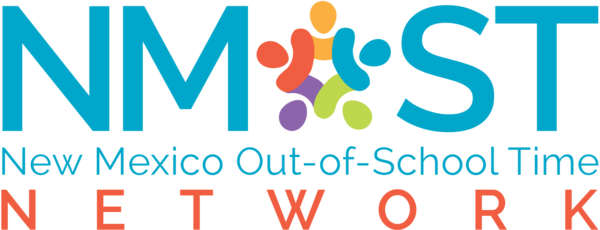As a STEM Expansion VISTA for the New Mexico Out-of-School Time Network (NMOST) I have spent an entire year trying to understand the barriers that keep young women and people of color from pursuing careers in STEM. I have read countless academic articles, infographics, and I even took a month long training on how to foster equity and inclusion in a STEM learning environment. Despite all of this work, I learned the most from reading the personal accounts of young New Mexican women pursuing a career in STEM.
When looking at the issue of the STEM gender gap, the organization has gathered vital information on what young women have to say about their challenges, successes, and suggestions for making the STEM pathway more inclusive and accessible for girls and young women. Since 2018, NMOST has awarded 33 Advancing Young Women in STEM Scholarships, and has received an average of 50 scholarship applications each of the last 3 years. Over the past few months I have sorted hundreds of essays for each of the five different questions asked on the scholarship application related to the role of OST programming, mentoring, and how we can make STEM programs more welcoming. The quantified results have been shared on the NMOST website as a series of blogs, but looking past the statistics, there are a few lessons I have learned by reading so many young women’s stories.
First, if one wants to make a STEM learning environment more inclusive for young women and people of color, listen to what they have to say. Comparing what young women have to say to research on the subject makes it clear that young women know what they need to succeed in STEM. It’s important to base best practices in research, but it is equally important to learn from the young women who have actually faced the challenges. Including youth voice in planning a STEM program also has the added effect of making youth feel included, and like they have a stake in the program.
A small amount of encouragement goes a long way. Educators have an important role in fighting unconscious bias in their classrooms, such as abolishing the idea that only intrinsically smart people belong in STEM. Gender stereotypes work as outside pressure to discourage young women from pursuing STEM and create internal self doubt that dissuades women from pursuing STEM. When young women responded to what made them continue in STEM, many talked about a mentor that they found in a program or a community of support that helped them see themselves as fitting into a STEM environment. Community support is key. Young women thrive if they feel like they belong. Encouraging and guiding young women on their STEM pathway reinforces their STEM identity.
The most important lesson learned is opportunity. Most young women won’t know that they want to pursue STEM until they have a positive experience with it. They won’t develop a positive STEM identity without being able to participate in science. Many young women in New Mexico will never have the chance to even discover they like STEM. In young women’s essays, I read over and over again about the importance of a local OST program that provided exposure to STEM activities and helped them develop an interest in STEM. Young women mentioned programs like NM Tech Trek, MESA, Young Women in Computing, SciGirls, and others as essential for starting them on their STEM pathways.
In 2020 NMOST convened a STEM Gender Equity Coalition including representatives of programs serving girls and young women throughout the state. This panel created 12 Promising Practices Guidelines for OST programs to recruit, engage and inspire more girls in STEM. These strategies can create a more inclusive learning environment for young women in STEM. Additional funding for OST STEM programming in rural areas, funding to expand STEM curriculums in public school, and funding for public transportation to and from OST programs will also be essential to ensure a diverse STEM workforce in the future.
